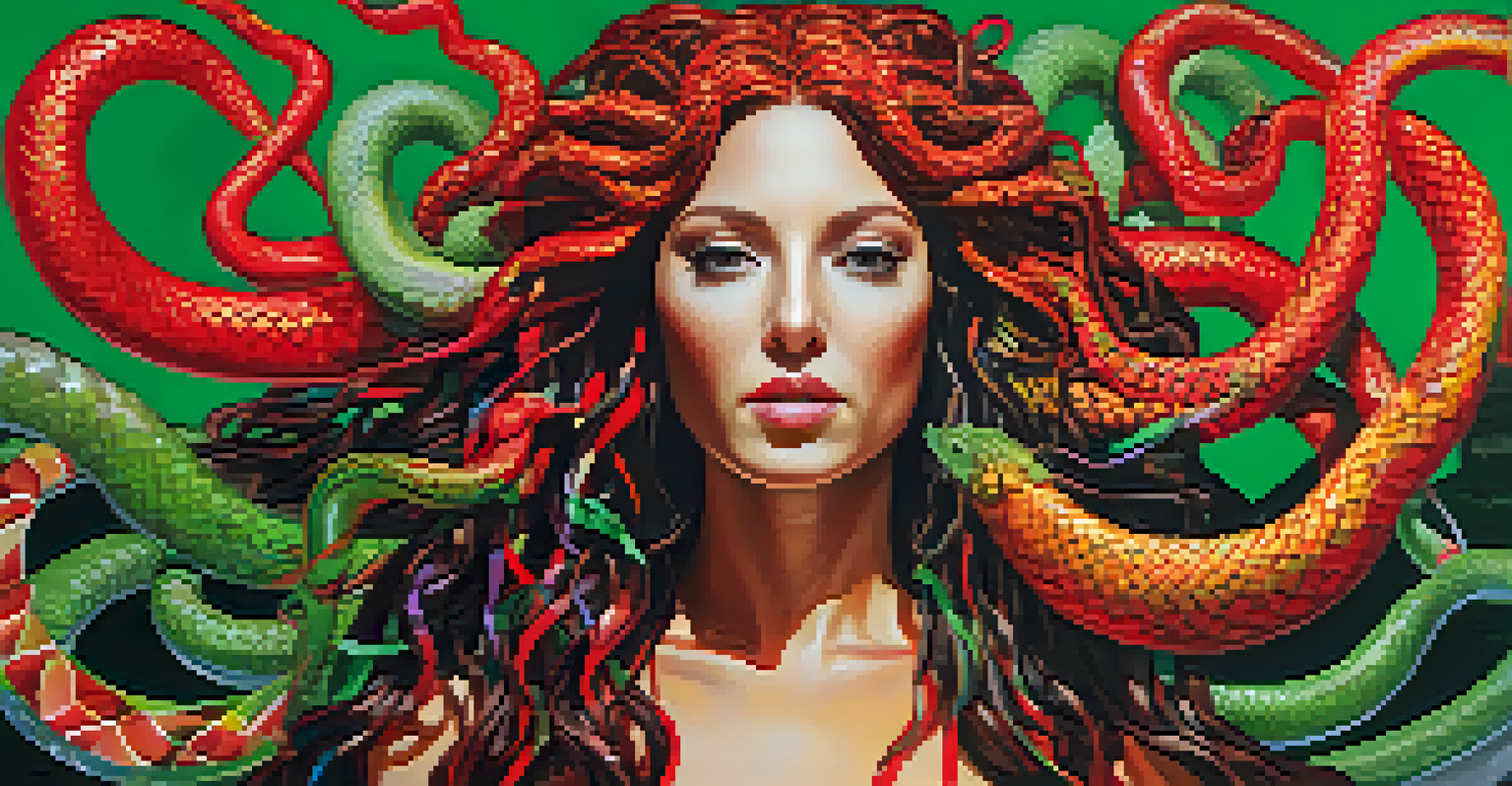Visual Storytelling in Art: Myths as a Narrative Device

Understanding Visual Storytelling and Its Importance
Visual storytelling is the art of conveying ideas through imagery rather than text. It allows artists to communicate complex narratives in a simple, engaging way. By using visual elements, artists can evoke emotions and provoke thought, making their work more relatable and impactful.
The story is the thing that we all share. It is the common thread that connects us all, and it is the foundation of all communication.
In the realm of art, storytelling becomes a bridge that connects the viewer to the artist's intent. This connection can transform a mere image into a compelling narrative that resonates with audiences. Myths, in particular, serve as powerful narrative devices that enrich visual storytelling.
Through visual storytelling, artists can create layers of meaning, inviting viewers to explore beyond the surface. This engagement not only captivates the audience but also encourages a deeper appreciation of the art form itself.
The Role of Myths in Art and Culture
Myths are traditional stories that often explain natural phenomena, human behavior, or cultural beliefs. They serve as timeless narratives that reflect the values and experiences of a society. In art, myths provide a rich source of inspiration, allowing artists to explore universal themes such as love, conflict, and transformation.

By incorporating myths into their work, artists can tap into a shared cultural vocabulary that speaks to the collective human experience. This connection enhances the viewer's understanding and emotional response, making the artwork more relatable. Myths can also provide context, helping to frame the narrative within the larger tapestry of human history.
Visual Storytelling Enhances Art
Visual storytelling allows artists to convey complex narratives through imagery, making their work relatable and impactful.
Moreover, myths often embody archetypal characters and situations, which can resonate on a psychological level. This resonance helps to draw audiences in, creating a sense of familiarity and engagement that makes the artwork memorable.
Famous Myths Depicted in Art Throughout History
Throughout history, countless artists have drawn inspiration from myths to create iconic works. For example, Botticelli's 'The Birth of Venus' captures the myth of Venus emerging from the sea, symbolizing beauty and love. This painting not only showcases the artist's technique but also invites viewers to ponder the deeper meanings behind the myth.
Art is the most beautiful of all lies; it is the only lie that reveals the truth.
Similarly, Picasso's 'Guernica' uses the backdrop of the Spanish Civil War to convey themes of suffering and chaos, reminiscent of mythological tragedies. By framing contemporary issues within a mythological context, artists can highlight the recurring nature of human struggles, making their messages timeless.
These artworks demonstrate that myths are not just relics of the past but continue to influence and shape artistic expression today. They serve as a reminder that storytelling, even in visual form, is a vital part of our cultural heritage.
The Emotional Impact of Myths in Visual Art
Myths have a unique ability to evoke strong emotions, making them effective narrative devices in art. When artists weave myths into their work, they tap into universal feelings that transcend cultural boundaries. This emotional resonance can lead to a more profound viewer experience, facilitating a connection that lingers long after the artwork is seen.
For instance, the myth of Orpheus and Eurydice explores themes of love and loss, which many can relate to in their own lives. Artists depicting this myth often evoke feelings of longing and heartache, inviting viewers to reflect on their own experiences. This shared emotional journey can create a powerful bond between the artwork and its audience.
Myths Connect Cultures and Emotions
Incorporating myths into art taps into shared cultural experiences, enriching viewers' understanding and emotional responses.
Consequently, the use of myths in art serves not only to tell a story but also to provoke introspection and emotional engagement. This layer of depth enriches the viewing experience, allowing for a more meaningful interaction with the artwork.
Modern Interpretations of Myths in Contemporary Art
In contemporary art, artists often reinterpret myths to address current social issues and personal narratives. This modern lens allows for a fresh perspective on ancient tales, making them relevant for today's audiences. For example, contemporary artists may explore feminist themes through the lens of figures like Medusa, challenging traditional narratives.
By reimagining these myths, artists can critique societal norms and provoke discussions about identity, power, and culture. This approach not only breathes new life into old stories but also encourages viewers to reconsider their understanding of these narratives. It highlights the adaptability of myths in reflecting contemporary struggles and triumphs.
Modern interpretations of myths serve as a reminder that storytelling is dynamic, evolving with society. This evolution keeps the art form alive, ensuring that the themes of human experience remain relevant and relatable across generations.
Creating Visual Narratives Through Mythology
For artists looking to create visual narratives using mythology, the first step is to choose a myth that resonates personally or culturally. This connection can inspire a more authentic interpretation, allowing the artist to infuse their work with genuine emotion and meaning. Whether it’s a well-known tale or a lesser-known story, the key is to find a narrative that speaks to the artist's vision.
Next, artists can explore various media and techniques to bring their chosen myth to life. This could involve painting, sculpture, or mixed media, each offering unique ways to express the narrative. The goal is to create a visual experience that captures the essence of the myth while inviting the viewer to engage with it on multiple levels.
Modern Myths Address Current Issues
Contemporary artists reinterpret myths to reflect social issues, ensuring these stories remain relevant and provoke meaningful discussions.
Finally, artists should consider the context in which their work will be displayed. This includes the audience's cultural background, which can influence how the myth is interpreted. By being mindful of these factors, artists can create powerful visual narratives that resonate and inspire, fostering a deeper understanding of the myths that shape our world.
The Future of Visual Storytelling with Myths
As we move forward, the role of myths in visual storytelling is likely to evolve alongside changing societal values and technological advancements. Artists will continue to find innovative ways to reinterpret these ancient narratives, ensuring they remain relevant in a rapidly changing world. This adaptability keeps myths alive, allowing them to resonate with new generations.
Emerging technologies such as virtual reality and augmented reality offer exciting possibilities for visual storytelling. Artists can create immersive experiences that bring myths to life in ways never before imagined. These innovations can deepen audience engagement, allowing viewers to interact with the narrative in a more meaningful way.

Ultimately, the future of visual storytelling lies in the ability to blend tradition with innovation. By honoring the past while embracing new techniques, artists can ensure that myths continue to serve as powerful narrative devices in art, enriching our understanding of the human experience.